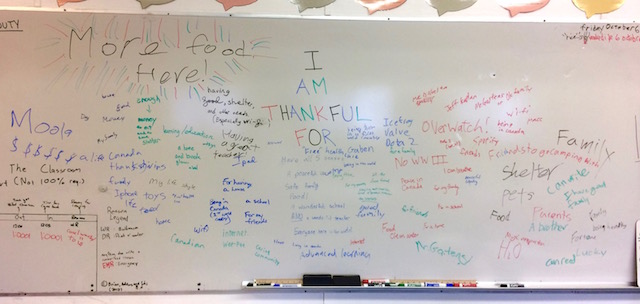
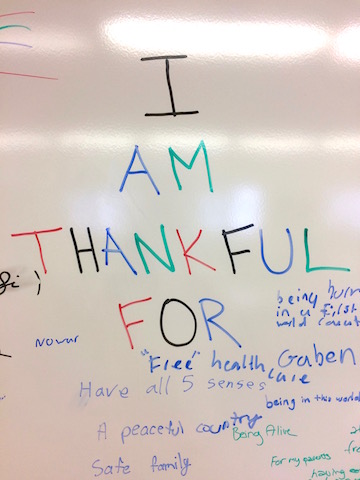
Personally, I am thankful for being the teacher of the children of so many talented chefs!
Families: I – and we – cannot thank you enough for the generosity you displayed on Friday with your contributions to our Thanksgiving feast! As one student said, it was great training for the actual Thanksgiving day: all of our stomachs were very well stretched. There was so much food that we had to use both rolling carts and have a separate table for desserts.
Students each introduced their dishes, telling us the name, the main ingredients, and why it was important to their family…
And then we dug in!
At the risk of sounding gluttonous, I can’t wait to eat all of these dishes again in Term 3!
Other highlights from the last few weeks:
- We continued to build our capacity for team work with cooperative juggling (thanks again to Mr. Grundy at Parkcrest for introducing me to this great activity. Check out all of the laughter.)
- We explored several math strategies in preparation for beginning our Number Theory unit. Here’s the class working in pairs in the fiendish Skyscraper activity, which I learned from the Math Guru, Peter Liljedahl, of SFU.
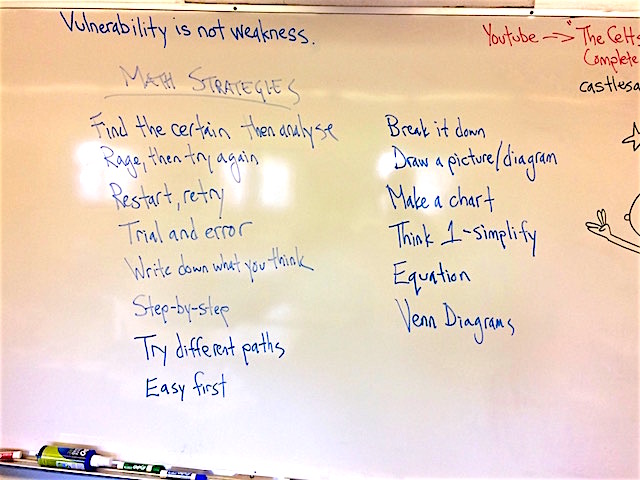
- We had the first round of the Abe Gaitens Memorial Mental Math Contest (when my sisters and I were young, our father used to do a variation of this exercise at the dinner table, reciting a string of numbers and operations that we had to hold in our heads, mentally calculating as we went, in order to attempt to come up with the correct answer). Congratulations, Peter!
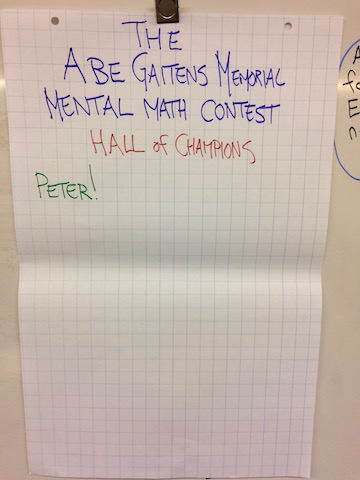
- I had the privilege of meeting all of you for our Parent Conversations; in case you missed it, here were the messages the class left for you:
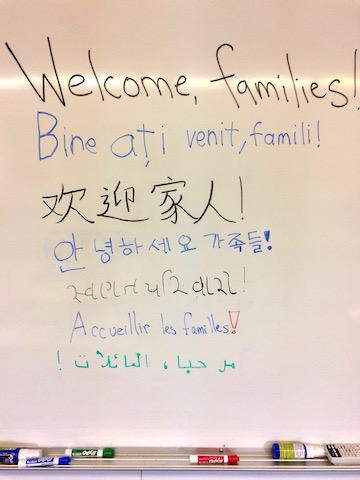
- We watched the first episode of Chef Gabrielle Hamiliton‘s season of The Mind of the Chef through the lens of Depth and Complexity:
- We had the Welcoming Assembly, for which the Grade 7s were all glad they wore deodorant:
- We started reading The Book of Three (more on that later!)
- There was the triumphant return of Giant 6-Square (accompanied by the triumphant return of hometown hero, Shawn!):
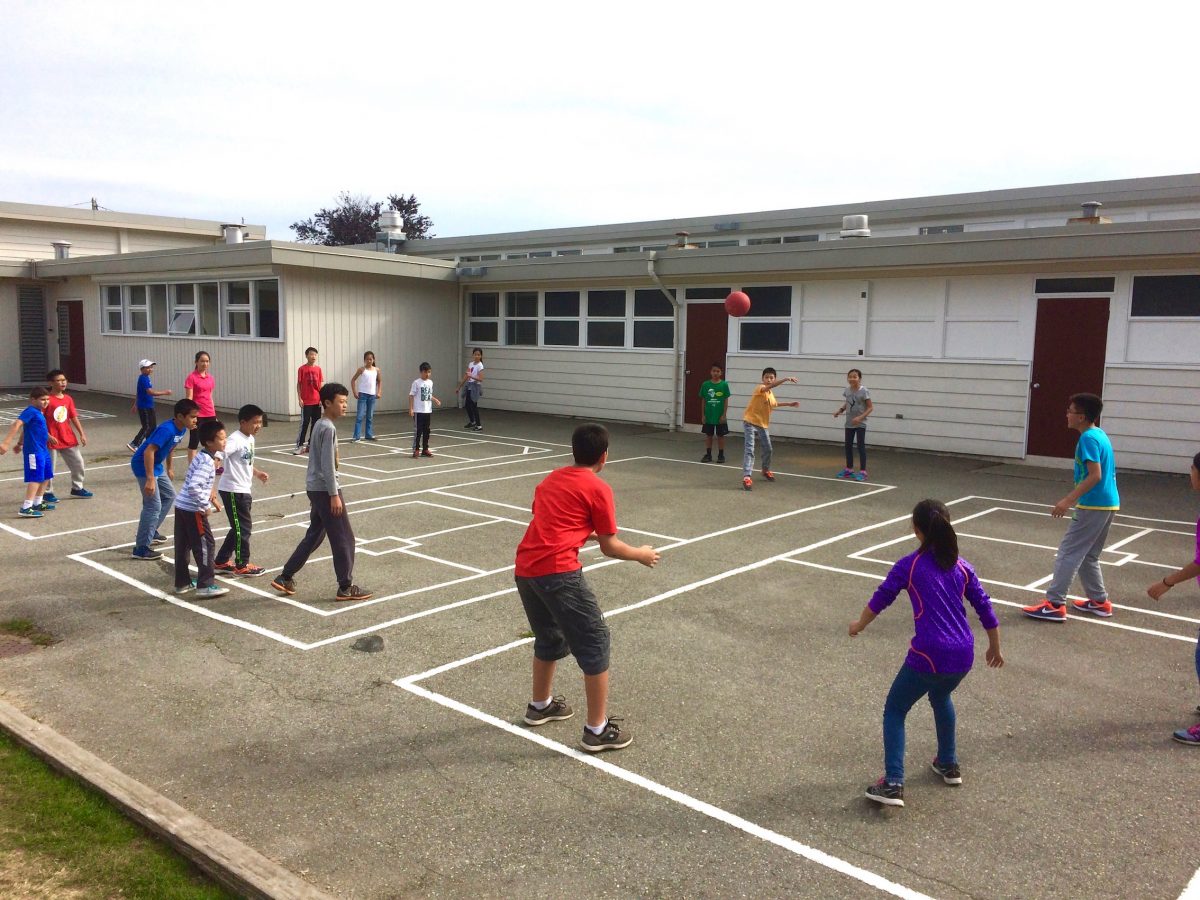
- And we began our Writing unit, focusing on descriptive writing.
Riffing off of Wu Mei‘s advice “to recognize the whole through the observation of a small part,” and building off an exercise from the Learning to Make Choices for the Future place-based education manual (teachers, see the appendix for pages and pages of great activities), students were each given a laurel leaf from a collection of seemingly identical laurel leaves. They had two minutes to study their leaf in detail. I then collected all of the leaves and mixed them up, and students had to use their observation skills to sift through the pile of twenty-four until they were sure they had found their own.
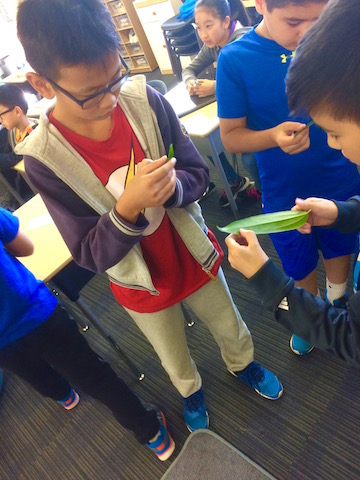
Students then wrote in their comp books, describing their individual leaves in exquisite detail, paying attention to all aspects of the leaf, front and back, leaf and stem, using precise word choice and figurative language, so that someone else would be able to identify their leaf from all of the others.
After about 20 minutes of writing, students shared their writing with their podmates, who gave them advice that prompted another 10 minutes of so of writing.
Finally, students named their leaves and used stickers so that they would be able to identify them easily, and each pod mixed up their leaves and their comp books and traded leaves and books with a neighbouring pod, who in turn tried to identify which leaf belonged to which comp book. Each correct identification earned a point each for the reader and the writer.
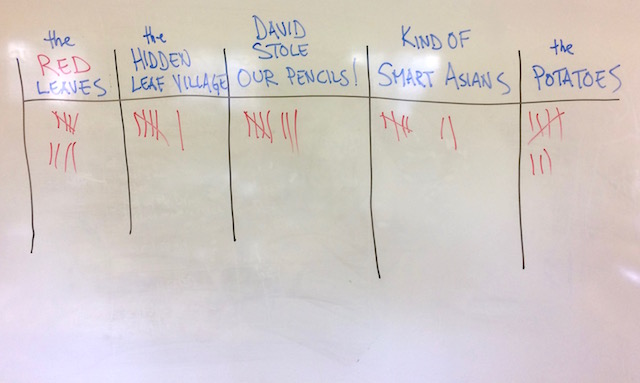
Students then put what they considered to be their most descriptive sentence up on the board:
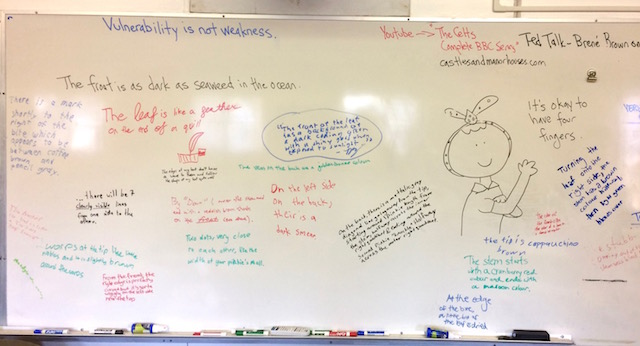
The next week, we repeated the exercise with sunflowers.
Here, students wrote individually about the flower their pod had received, and again used the peer editing process to help generate further ideas and more minute and specific observations. And again, comp books were passed to another pod, whose job it was read through the descriptions and determine which flower belonged to that group. Working together from the descriptions, pods created checklists of traits that the sought-for flower needed to have:
We had a 100% success rate in identification!
Again, students wrote what they considered to be their most descriptive sentence on the board. I was so impressed with the results that I ran to find Ms. Driussi, so that she could be witness to these wonderfully specific images created with words:

This is, of course, not an exhaustive list of everything we’ve been up to, but it was all my bedeviled phone had room to contain. More soon(ish!).
And I leave you with the latest in our The Strange Contortions of Silent Reading series:
































































































































































































